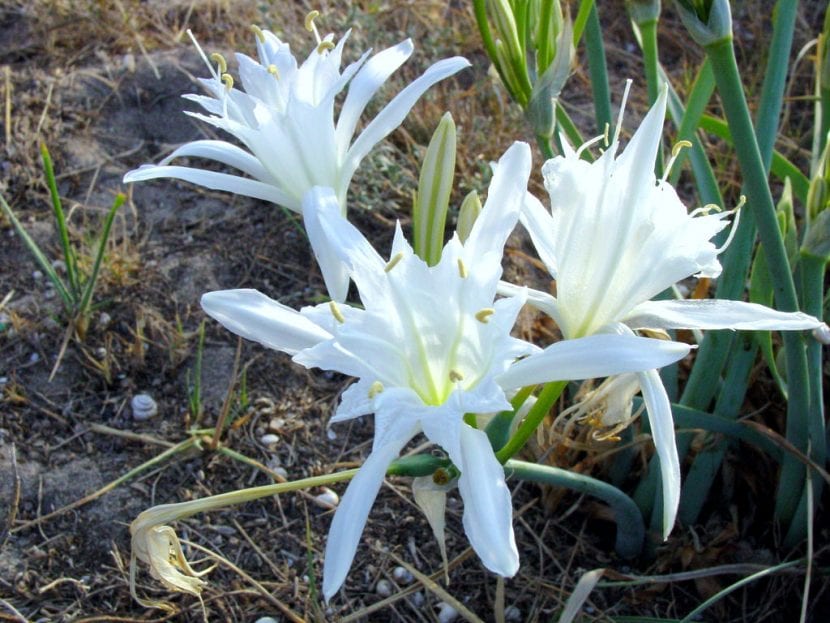
If you live near the coast and you love bulbous, then you can not stop having the pancreatic. It produces quite large and very pretty white flowers, which you can even cut and keep in a vase for several days without spoiling.
The cultivation is not complicated, although it is that it is convenient to take into account a number of things if you are about to buy some bulbs.
Origin and characteristics of the pankration
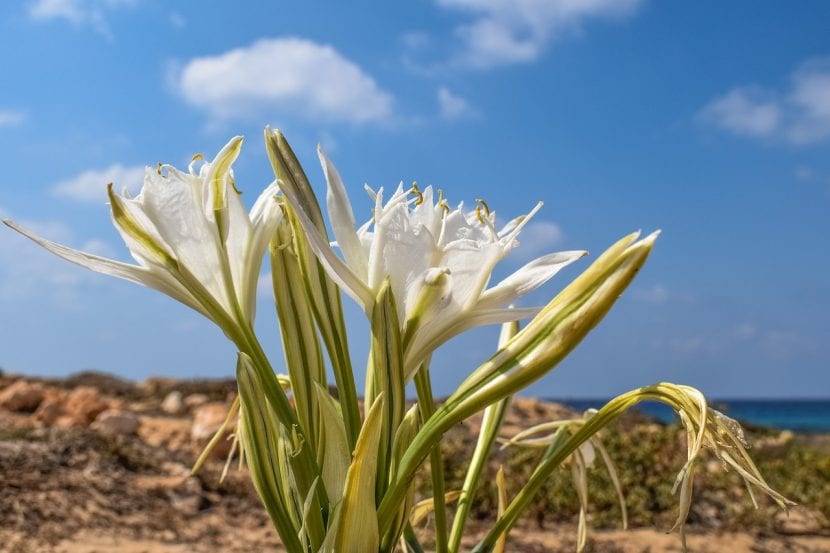
Our protagonist is a perennial bulbous herbaceous plant native to the Atlantic and Mediterranean coasts. It receives many common names which are: pankration, sea lily, sea lily, king's crown, maritime king's crown, sea narcissus, marine narcissus, tuberose, crowned tuberose, marine tuberose, sea lily. Its scientific name is chicory coast. Reaches a height of 50-60 centimeters, and is formed by linear erect bluish-green leaves that sprout from an elongated, whitish bulb that is toxic if ingested. The roots are very long, up to 80cm.
The flowers are large, 15cm, with white petals and very aromatic. They appear during the summer (from June to September in the northern hemisphere), when most plants have stopped blooming.
How do you take care of yourself?
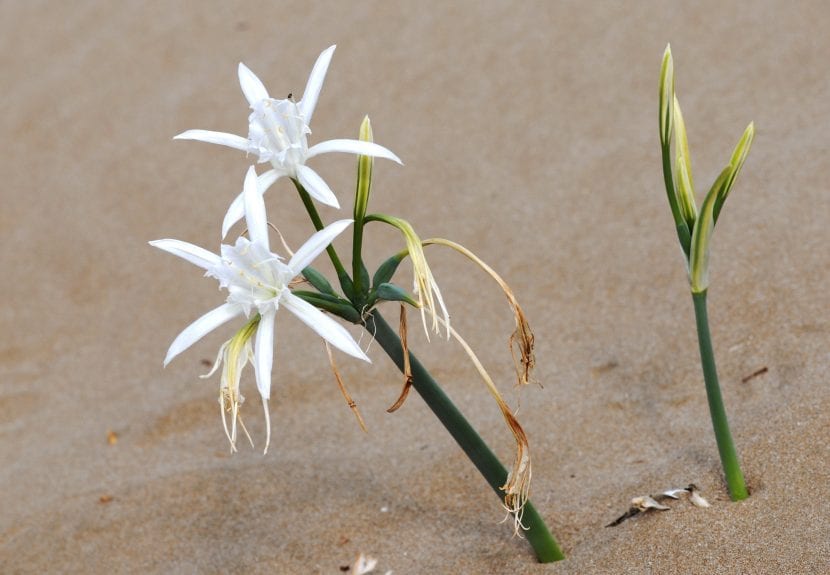
The pankration is a bulbous suitable for beginners. But to make it even easier to enjoy its beauty, we recommend giving it the following care:
Location
It is important that be placed outside, in full sun. It cannot be adapted to living in semi-shade.
Soil or substrate
- Garden: it must have a soil with excellent drainage. It grows well in the sandy ones.
- Flower pot: it is advisable to use vermiculite, perlite or similar to allow the correct oxygenation of the roots.
Irrigation
Watering has to be frequent, especially during the summer. In the hottest season we will water 5-6 times a week, and the rest of the year every 3 days or so. In the case of having it in a pot with a plate underneath, we will remove the excess water ten minutes after watering to prevent its roots from rotting.
Subscriber
Especially during the flowering season We must pay it using a specific liquid fertilizer for bulbous plants following the indications specified on the product packaging.
Multiplication
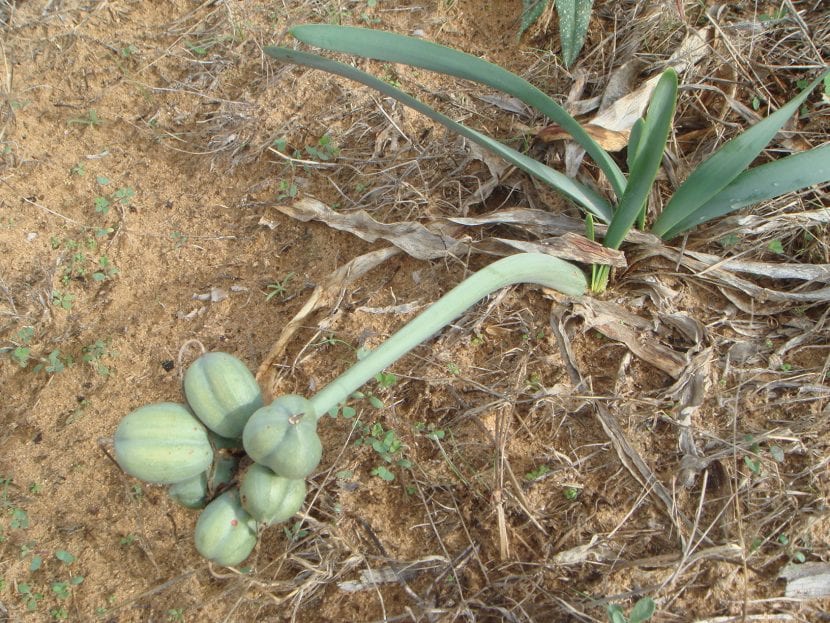
Seeds
If we want to multiply the pankration by seeds, we have to do the following:
- In spring, we fill a 10,5cm diameter pot with universal growing medium mixed with equal parts perlite.
- Afterwards, we place no more than three seeds on the surface, separated from each other.
- Next, we cover them with a thin layer of substrate.
- Then we water.
- Finally, we place the pot outside, in full sun.
Keeping the substrate always slightly damp will germinate in 15-30 days.
Bulbs
If we want to multiply it by bulbs, we will follow this step by step:
- The first thing we will do is acquire them in the fall.
- Once we have them, we will plant them in the ground or in the garden at a depth of 10-15 centimeters.
- Afterwards, we cover them with soil or substrate.
- Finally, we water.
In spring we will see that the leaves sprout and, in summer, the flowers.
Plagues and diseases

The pankration is a very resistant bulbous that does not usually have problems. Now, it is important to know that Its leaves are the favorite food of the caterpillar of the Brithys crini, which is a black night butterfly. In its adult phase it is not very showy, but in its larval phase it is black with white spots and an orange head.
To avoid it and / or treat the affected plants, we can use insecticides that contain Triflumuron. The yellow color traps placed near our specimens could also be of use to us. The yellow will attract insects that, once they come into contact with the trap, will stick.
Rusticity
Pankration can be grown outdoors in a wide variety of climates, from tropical to mild temperate. Withstands frosts down to -7 degrees Celsius without problems (It can lose its leaves if they register) and high temperatures of 35-40ºC do not affect it at all.
For what do you use it?
Ornamental
Its most widespread (and harmless 😉) use is ornamental. Its large, scented flowers brighten up the summer when the rest of the plants are already expending energy in the production and ripening of the fruits. In addition, it looks great both in pot and in the garden, without forgetting that it can be used as a cut flower.
Medicinal
The bulbs contain ungeremin, which is an acetylcholinesterase inhibitor, so can be a good treatment for Alzheimer's disease always under medical advice. High doses could be fatal to health.
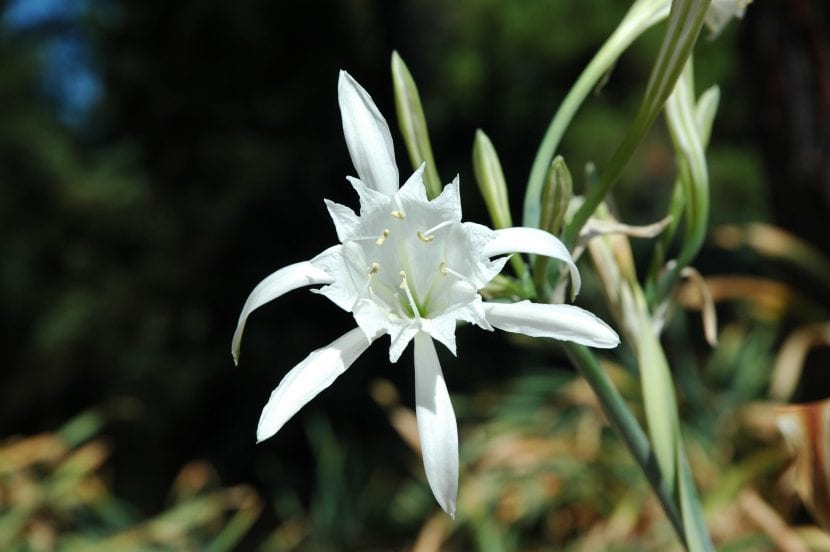
Did you know the pankration plant? You may have seen it once if you've been to the beach or strolling along the coast. I hope you found what we have told you about her interesting 🙂.
Do you know that the sea lily is actually a protected plant since its roots help to maintain the dune system? So better not start it when you walk through the dunes
Hello Eli.
True, and in fact it is forbidden to pull plants from nature.
Greetings.
Very good information, my concern to know what this plant was for was satisfied. Thanks
Cool. We are glad Jacobo.
I live on the beach, but to my shame, despite seeing it bloom every year, I did not know anything about this plant. I have found it very instructive. Thanks
Hello Teresa.
Thank you very much.
By the way, I would dare to say that all of us are unaware of plants that we see in nature, and / or on the roadsides. 🙂
Greetings.